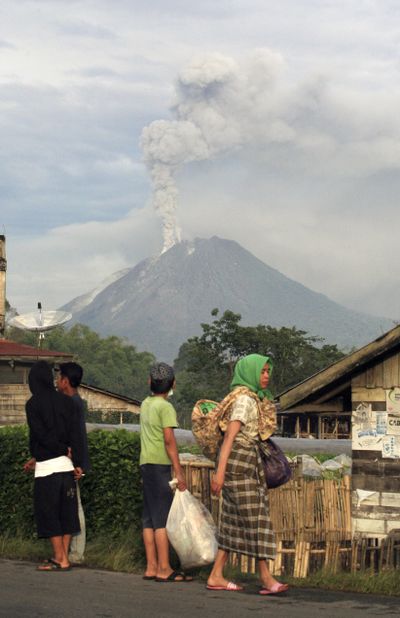Long-silent volcano erupts in Indonesia

TANAH KARO, Indonesia – Tens of thousands of people packed emergency shelters after a long-dormant volcano in western Indonesia spewed clouds of hot ash and smoke more than a mile into the air – an eruption that caught scientists off-guard.
The eruption of Mount Sinabung put the region on the highest alert level, and some domestic flights had to be diverted because of poor visibility.
Villagers living along Sinabung’s fertile slopes in North Sumatra province started heading down the 8,000-foot volcano after it began rumbling during the weekend.
An explosion Sunday was followed by a much more powerful blast Monday, and the number of people who evacuated hit 30,000.
Two people died, but Priyadi Kardono of the National Disaster Management Agency said it was too early to say if the volcano was to blame.
Sinabung last erupted in 1600, and officials acknowledged that they had not been monitoring the volcano because it had been dormant for so long.
“The nearest monitoring post to Sinabung is Mount Merapi – around 400 kilometers (240 miles) to the southeast – so we were totally in the dark. We didn’t know anything until it started rumbling,” said Imam Simulingga, a government volcanologist.
He noted that there are 129 active volcanoes to watch in Indonesia, which is spread across 17,500 islands and is prone to eruptions and earthquakes because of its location within the so-called “Ring of Fire” – a series of fault lines stretching from the Western Hemisphere through Japan and Southeast Asia.
“We don’t know what set it off, how long it will continue or whether we should expect pyroclastic flows or more powerful eruptions,” said Surono, who like many Indonesians uses only one name.